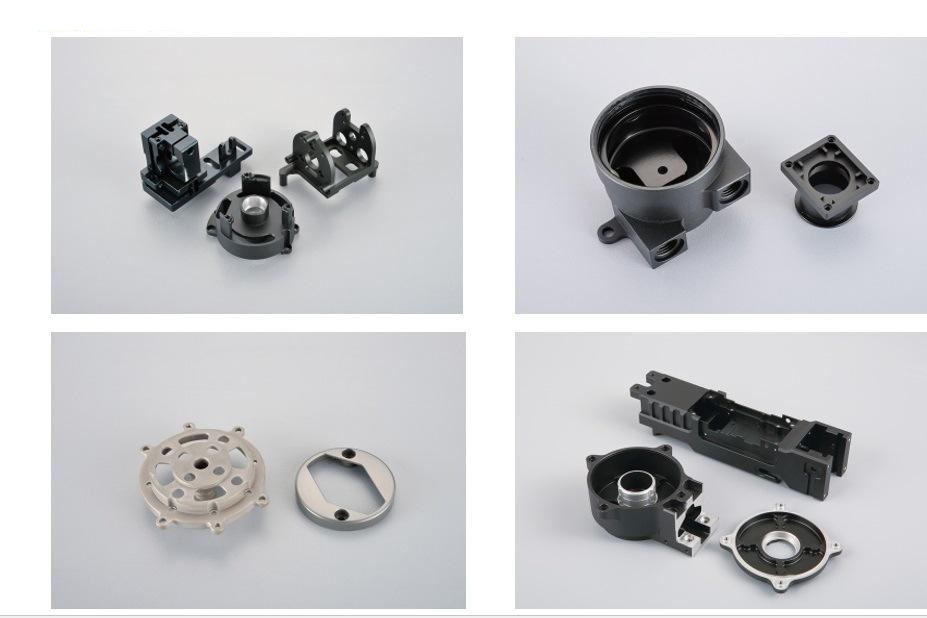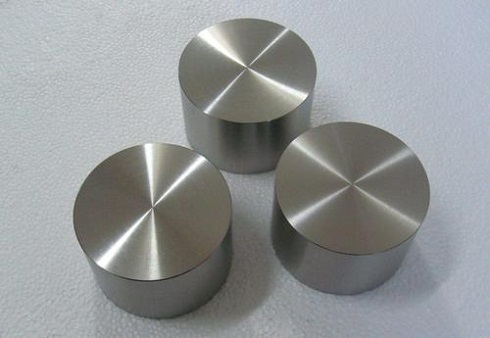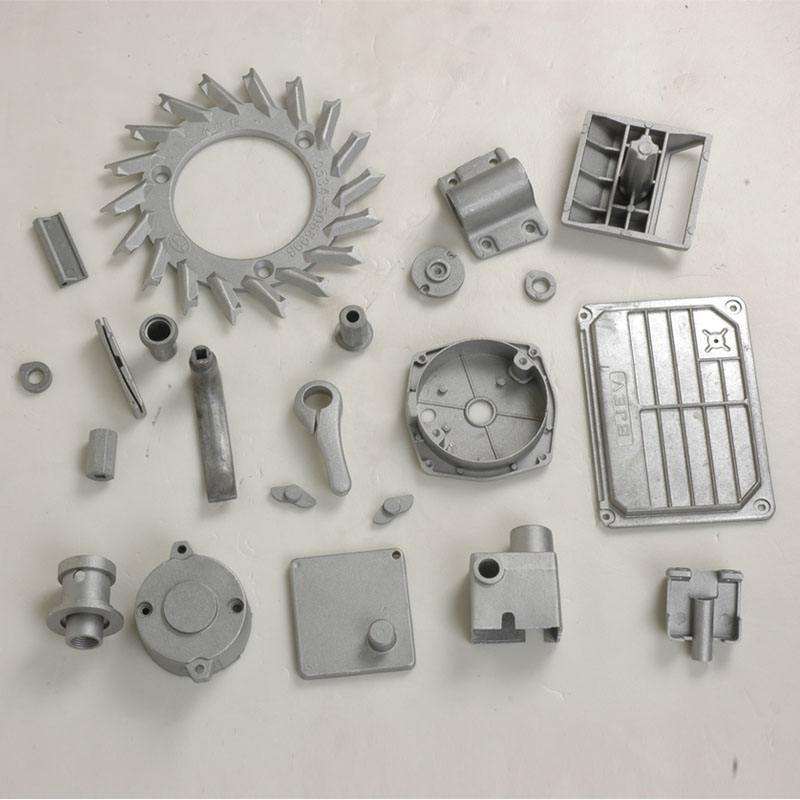Titanium
Titanium is an important structural metal developed in the 1950s, and titanium alloy is widely used in various fields because of its high strength, good corrosion resistance and high heat resistance. Many countries in the world have realized the importance of titanium alloy materials, have carried out research and development on it, and have been practical applications. In the 1950s to 1960s, mainly the development of high-temperature titanium alloys for aeroengines and structural titanium alloys for the body, a number of corrosion-resistant titanium alloys were developed in the 1970s, and since the 1980s, corrosion-resistant titanium alloys and high-strength titanium alloys have been further developed. Titanium is mainly used in the production of aircraft engine compressor components, followed by rockets, missiles and high-speed aircraft structural parts.

The density of titanium alloy is generally about 4.51g/cm3, only 60% of steel, the strength of pure titanium is close to the strength of ordinary steel, and some high-strength titanium alloys exceed the strength of many alloy structural steel. Therefore, the specific strength (strength/density) of titanium alloy is much higher than that of other metal structural materials, and components with high unit strength, good rigidity and light weight can be produced. At present, titanium alloys are used in aircraft engine components, skeletons, skins, fasteners and landing gear.
Titanium alloy works in humid atmosphere and seawater medium, its corrosion resistance is much better than stainless steel; Resistance to pitting corrosion, acid corrosion, stress corrosion is particularly strong; Excellent corrosion resistance to alkali, chloride, chlorine, nitric acid, sulfuric acid, etc.
Titanium is mainly used in the production of aircraft engine compressor components, followed by rockets, missiles and high-speed aircraft structural parts. In the mid-1960s, titanium and its alloys have been used in general industry, for the production of electrolytic industry electrodes, power station condensers, oil refining and seawater desalination heaters and environmental pollution control devices.

Titanium – Source: Wikipedia
Aluminum
Aluminum alloy is the most widely used non-ferrous structural materials in the industry, and has been widely used in aviation, aerospace, automotive, machinery manufacturing, shipbuilding and chemical industries. With the rapid development of science and technology and industrial economy in recent years, the demand for aluminum alloy welded structural parts is increasing, which makes the weldability research of aluminum alloy further. The wide application of aluminum has promoted the development of aluminum alloy welding technology, and the development of welding technology has expanded the application field of aluminum, so the welding technology of aluminum is becoming one of the hot spots of research.
Aluminum alloy is widely used in machinery manufacturing, transportation machinery, power machinery and aviation industry, aircraft fuselage, skin, compressor, etc., often made of aluminum alloy to reduce weight. The welding of aluminum alloy instead of steel plate can reduce the weight of the structure by more than 50%. All kinds of aircraft use aluminum alloy as the main structural material, and the skin, beam, rib, stringer, spacer frame and landing gear on the aircraft can be made of aluminum alloy. The crew compartment, forward fuselage, middle fuselage, rear fuselage, vertical tail, flaps, elevons and horizontal tail are all made of aluminum alloy. The main structural materials of various artificial Earth satellites and space probes are also aluminum alloys.
Aluminum veneer is processed with the world famous large enterprises of high-quality aluminum alloy, and then sprayed by the surface of the United States PPG, or Aksu PVDF fluorocarbon paint refined, aluminum veneer is mainly composed of panels, strengthening bones, hanging ears and so on. Aluminum veneer features: light weight, good rigidity, high strength, non-combustion, good fire resistance, good processing technology, wide color selection, excellent decorative effect, easy to recycle, conducive to environmental protection. Aluminum veneer application: building curtain wall, column and beam, balcony, partition packaging, interior decoration, advertising signs, vehicles, furniture, booth, instrument shell, subway shipping tools, etc.
Aluminum – Source: Wikipedia

Typical use of aluminum
1050 Extruded coils for the food, chemical and brewing industries, various hoses, fireworks powder
1060 requires corrosion resistance and formability are high occasions, but the strength requirements are not high, chemical equipment is its typical use 1100 for processing needs to have good formability and high corrosion resistance but do not require high strength parts. Examples include chemical products, food industry installations and storage containers, sheet work pieces, deep drawing or spinning concave utensils, welded parts, heat exchangers, printing plates, nameplates, reflectors
1145 Packaging and insulation aluminum foil, heat exchanger
1199 electrolytic capacitor foil, optical reflective deposition film
2014 For applications requiring high strength and hardness (including high temperature). Aircraft heavy duty, forgings, slabs and extrusions, wheels and structural components, multistage rocket first stage fuel tanks and spacecraft parts, truck frames and suspension parts
2017 is the first 2XXX series alloy to obtain industrial applications, and the current application range is narrow, mainly for rivets, general mechanical parts, structural and transport vehicle structural parts, propellers and accessories
2024 Aircraft structures, rivets, missile components, truck wheels, propeller components and various other structural components
2036 Auto body sheet metal parts 2048 Aerospace structural parts and weapons structural parts
2124 Aerospace structures 2218 Aircraft engine and diesel engine pistons, aircraft engine cylinder heads, jet engine impellers and compressor rings
2219 Space rocket welding oxidizer tank, supersonic aircraft skin and structural parts, working temperature of -270~300℃. Good weldability, high fracture toughness, T8 state has a high resistance to stress corrosion cracking
2A11 aircraft of medium strength structural parts, propeller blades, transport vehicles and building structural parts. Medium strength bolts and rivets for aircraft
2A12 Aircraft skin, spacer frame, wing ribs, wing SPAR, rivets, etc., structural parts of construction and transportation vehicles
2A14 Free forgings and die forgings with complex shapes
2A16 Space aircraft parts with working temperature of 250~300℃, welded containers and airtight cockpit working at room temperature and high temperature 2A60 aircraft engine compressor wheel, wind turbine, fan, impeller, etc
2A70 aircraft skin, aircraft engine piston, wind guide wheel, wheel, etc
2A80 aero engine compressor blade, impeller, piston, ring and other parts with high operating temperature
3003 is used for processing parts that need to have good formability, high corrosion resistance and good weldability, or require these properties and need to have higher strength than 1XXX series alloy, such as kitchenware, food and chemical products processing and storage devices, tanks and tanks for transporting liquid products, various pressure vessels and pipelines processed with sheet metal
3004 All-aluminum can body requires parts with higher strength than 3003 alloy, chemical product production and storage devices, sheet workpiece, building workpiece, building tools, various lighting parts
3105 Room partition, baffle plate, movable room plate, gutter and downspout, sheet forming workpiece, bottle cap, bottle stopper, etc
3A21 aircraft fuel tank, oil conduit, rivet wire, etc. Building materials and food and other industrial equipment
5052 This alloy has good formability, corrosion resistance, candleability, fatigue strength and moderate static strength, used in the manufacture of aircraft fuel tanks, oil pipes, traffic vehicles, ships sheet metal parts, instruments, street lamp brackets and rivets, hardware products, 5056 magnesium alloy and cable sheathing rivets, zippers, nails, etc. Aluminum-coated wire is widely used in the processing of agricultural trap covers and other applications where high corrosion resistance is required
5083 for applications requiring high corrosion resistance, good weldability and moderate strength, such as ship, automobile and aircraft plate welds; Pressure vessels, refrigeration devices, TV towers, drilling equipment, transportation equipment, missile components, armor and so on
The 5086 is used in applications requiring high corrosion resistance, good weldability and moderate strength, such as ships, automobiles, aircraft, cryogenic equipment, TV towers, drilling units, transportation equipment, missile parts and decks
5154 Welded structures, storage tanks, pressure vessels, ship structures and offshore installations, transport tanks
5456 armor plate, high strength welded structure, storage tank, pressure vessel, ship material
5A02 Aircraft fuel tank and conduit, welding wire, rivets, Marine structural parts
5A03 Medium strength welded structures, cold stamping parts, welded containers, welding wires, can be used in place of 5A02 alloy
5A05 Welded structural parts, aircraft skin skeleton
5A06 Welding structure, cold die forging parts, welding and drawing container force parts, aircraft skin and bone parts
6061 requires a certain strength, weldability and high corrosion resistance of a variety of industrial structures, such as manufacturing trucks, tower buildings, ships, trams, fixtures, mechanical parts, precision processing of the pipe, rod, shaped material, plate
6351 extrusion structural parts of vehicles, water, oil and other pipelines
6A02 Aircraft engine parts, forgings and die forgings with complex shapes
7005 extrusion materials for the manufacture of welded structures with both high strength and high fracture toughness, such as trusses, rods, and containers for transportation vehicles; Large heat exchangers, and parts that cannot be soldered after welding;
7039 Freezing containers, cryogenic instruments and storage boxes, fire pressure equipment, military equipment, armor plates, missile devices
7049 is used to forge parts with the same static strength as 7079-T6 alloys that require high stress corrosion cracking resistance, such as aircraft and missile parts – landing gear hydraulic cylinders and extrusions. The fatigue performance of the parts is roughly equal to that of 7075-T6 alloy, and the toughness is slightly higher.
7178 for the manufacture of aerospace components requiring high compressive yield strength.
7475 aluminized and unaluminized panels for fuselage, wing skeleton, stringer, etc. Other parts that must have both high strength and high fracture toughness.
7A04 aircraft skin, screws, and stress components such as girder stringer, spacer frame, wing rib, landing gear, etc

Stainless steel
Stainless Steel (Stainless Steel) refers to steel that is resistant to weak corrosive media such as air, steam, water and chemical etching media such as acid, alkali, salt, etc., also known as stainless acid-resistant steel. In practical applications, the steel that is resistant to the corrosion of weak corrosive media is often called stainless steel, and the steel that is resistant to the corrosion of chemical media is called acid-resistant steel.
Due to the difference in the chemical composition of the two, the former is not necessarily resistant to chemical medium corrosion, while the latter is generally stainless. The corrosion resistance of stainless steel depends on the alloying elements contained in the steel. The basic alloy elements of stainless steel also include nickel, molybdenum, titanium, niobium, copper, nitrogen, etc., to meet the requirements of various uses for the structure and performance of stainless steel.
- Austenitic 1Cr17Mn6Ni5N nickel steel, instead of grade 1Cr17Ni7, magnetic after cold working. For rolling stock.
- 0Cr19Ni9 is the most widely used stainless steel, food, general chemical equipment, atomic energy industry.
- 0Cr17Ni12Mo2 has better corrosion resistance than 0Cr19Ni9 in seawater and various other media. Mainly used as pitting resistance material.
- 1Cr18Ni9Ti is used as welding core, diamagnetic instrument, medical device, acid-proof container and equipment lining conveying pipeline and other equipment and parts.
- Austenitic stainless steel 0Cr18Ni9. Stainless steel with austenitic structure at room temperature. When Cr is about 18%, Ni 8%-10% and C is about 0.1%, the steel has a stable austenitic structure. Austenitic chromium-nickel stainless steel includes the famous 18Cr-8Ni steel and the high Cr-Ni series steel developed on this basis by increasing the content of Cr and Ni and adding Mo, Cu, Si, Nb, Ti and other elements. Austenitic stainless steel is non-magnetic and has high toughness and plasticity, but the strength is low, it is impossible to strengthen it by phase change, and it can only be strengthened by cold working. If S, Ca, Se, Te and other elements are added, it has good machinability. In addition to the corrosion resistance of oxidizing acid medium, this kind of steel can also resist the corrosion of sulfuric acid, phosphoric acid, formic acid, acetic acid and urea if it contains Mo, Cu and other elements. If the carbon content of such steel is less than 0.03% or contains Ti, Ni, it can significantly improve its intergranular corrosion resistance. High silicon austenitic stainless steel concentrated nitric acid has good corrosion resistance. Because austenitic stainless steel has comprehensive and good comprehensive properties, it has been widely used in all walks of life.
- 0Cr18Ni13Si4 Adds Ni and Si to grade 0Crl 9Ni9 to improve stress corrosion fracture resistance. It is used in the environment with more chloride ions.
- 0Cr18Ni5Mo3Si2 has a ferrite – nasi shape biphase structure, good stress corrosion rupture resistance, pitting resistance and 00Crl7Nil3M02 comparable, has a high strength suitable for chlorine ion containing environment, used in oil refining, fertilizer, paper, petroleum, chemical industry heat exchanger and condenser
- 3Cr13Mo is used for high hardness and high wear resistance of hot oil pump shaft, valve disc, valve bearing, medical device pile spring and other parts.
- 11Cr7 In all stainless steel, heat-resistant steel, hard measure is high. Make nozzle, bearing.
Stainless steel – Source: Wikipedia
JH MIM, which started as MIM, has established a sound product ecology by investing in advantageous enterprises in related industries. Now it can provide customers with one-stop services such as PM, Die Casting, CNC, and 3D printing. It is equipped with integrated assembly capabilities and the quality of quality suppliers mentioned above. Please click the link below for more detailed information.


